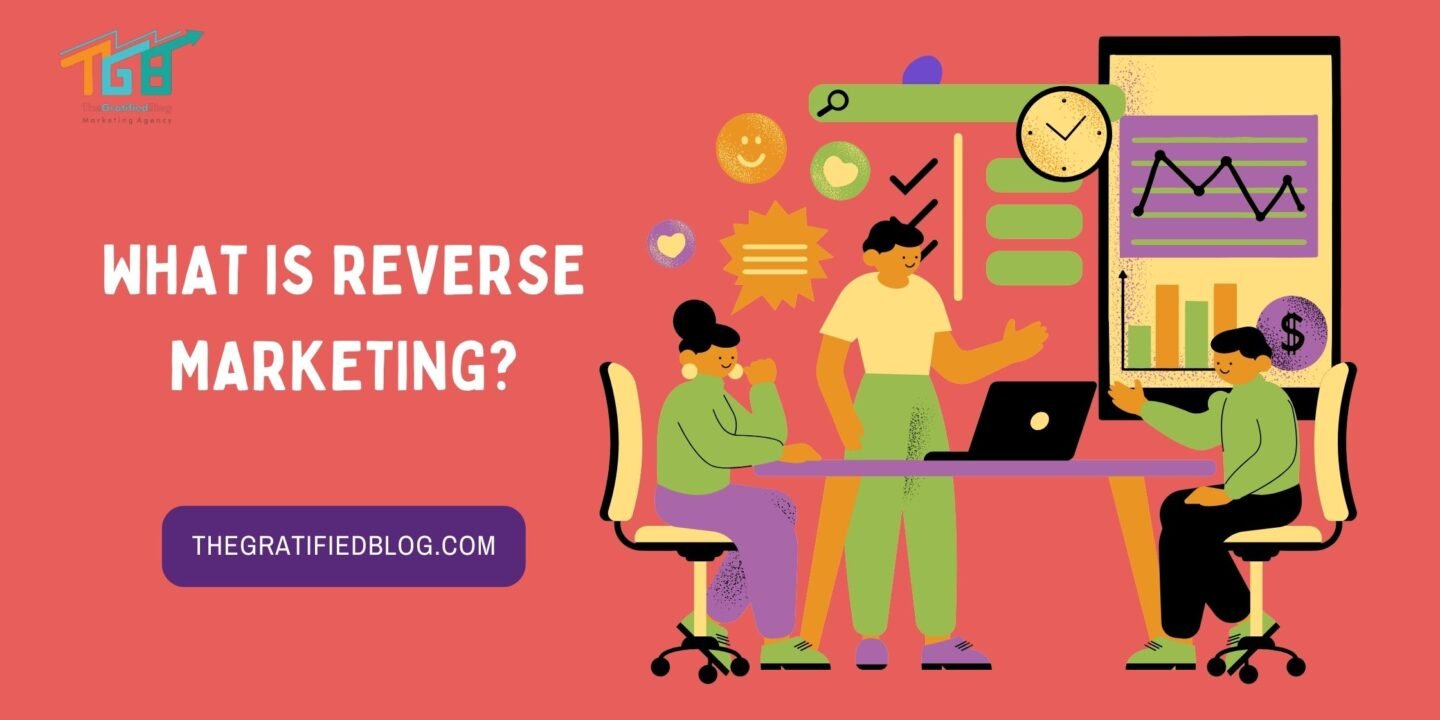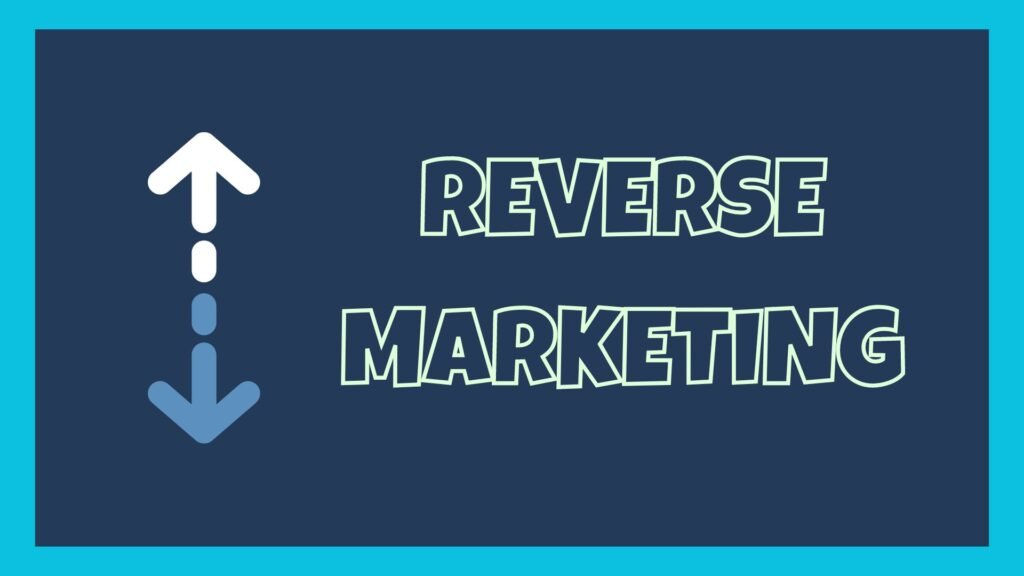
Reverse marketing is a concept that has gained significant attention in recent years. In traditional marketing, the focal point is on promoting products or services to customers. However, in this, the approach is flipped. Instead of businesses reaching out to potential customers, it is the customers who actively seek out businesses. This shift in perspective has notable implications for marketing strategies and tactics. This blog will explore reverse marketing, why it is essential, and how companies can effectively utilise this approach to attract and retain customers.
Definition And Explanation Of Reverse Marketing

Reverse marketing, also known as pull marketing or inbound marketing, is a strategic approach that places the customer in the middle of the marketing process. Unlike traditional marketing methods, where businesses push their products or services onto potential customers, this marketing encourages customers to seek out businesses based on their needs and preferences.
In this marketing, businesses create compelling content and experiences that attract customers and provide them with valuable information. By understanding the customer’s journey and pain points, businesses can tailor their marketing attempt to align with these needs and build trust and credibility with their target audience.
The rise of the internet and social media has played a remarkable role in the popularity of this marketing, as customers now have easy access to information and resources to make informed conclusions. This shift in power from businesses to customers has forced companies to adopt these marketing strategies to stay appropriate and competitive in today’s marketplace.
Benefits Of Reverse Marketing
This marketing offers numerous benefits to businesses across various industries. One of the key advantages is the ability to build strong and lasting relationships with customers. By understanding their requirements and preferences, businesses can provide personalised experiences and solutions that resonate with customers more deeply.
Another benefit is the cost-effectiveness of this marketing. Unlike traditional marketing methods that depend heavily on paid advertisements and promotions, this marketing primarily focuses on creating informational content and experiences that attract customers organically. This reduces advertising expenses and leads to higher-quality leads and conversions.
Furthermore, this marketing allows businesses to establish themselves as thought leaders and industry experts. By consistently providing the correct information and insights, businesses can position themselves as trusted authorities, enhancing their credibility and reputation.
How To Implement Reverse Marketing Strategies?

Implementing this marketing strategy requires careful planning and understanding of your target audience. Here are some critical steps to consider:
- Identify your target audience: Research and analyse your customer base to understand their demographics, preferences, and needs. This information will help you tailor your efforts to meet their specific requirements.
- Create valuable content: Develop content that educates, entertains, or solves problems for your target audience. This could include blog posts, videos, infographics, or podcasts. Focus on supplying information that is relevant and valuable to your customers.
- Optimize your online presence: Utilize search engine optimisation (SEO) techniques to improve your website’s visibility and ranking in search engine results. This will make it simple for potential customers to find you when searching for related topics or solutions.
- Engage with your audience: Actively participate in social media, forums, and online communities where the target audience spends their time. Respond to comments, answer questions, and initiate discussions to put up relationships and establish yourself as a trusted resource.
- Analyze and adapt: Regularly monitor and analyse the success of your marketing efforts. Use analytics tools to monitor website traffic, engagement metrics, and lead conversions. Adjust your strategies based on the data to optimise results.
By implementing these steps, you can leverage your marketing strategies to build strong relationships with your customers, increase brand credibility, and drive organic growth for your business.
Examples Of Reverse Marketing Campaigns
To better understand how this marketing can be effectively implemented, let’s take a look at an example of reverse marketing:
- Dove’s Real Beauty Campaign: Dove’s iconic campaign challenged traditional beauty standards by celebrating the diversity and authenticity of real women. By highlighting women of all shapes, sizes, and ages in their advertisements, Dove empowered their target audience and built a solid emotional connection with consumers.
- Red Bull’s Extreme Sports Sponsorship: Red Bull sponsors extreme sports events and athletes, associating their brand with adrenaline-pumping activities. Through this, Red Bull positions itself as a lifestyle brand, appealing to their target audience of thrill-seekers and adventure enthusiasts.
- Airbnb’s “Live There” Campaign: Airbnb’s “Live There” campaign focused on promoting local experiences rather than simply offering accommodations. By highlighting the unique aspects of each destination, Airbnb created a sense of belonging for travellers and positioned itself as a platform that connects people to authentic experiences.
- Zomato and Swiggy: These food delivery platforms are the reverse marketing examples in India. It engages with users through social media, feedback mechanisms, and personalized offers, reflecting a customer-centric approach.
- Ola and Uber: These ride-hailing companies prioritize customer feedback and constantly update their services based on user reviews and preferences, effectively implementing this marketing approach.
These examples demonstrate the effectiveness of this marketing in engaging with audiences, building authenticity, and promoting a brand’s values. By studying and learning from these successful campaigns, you can apply the same strategies to enhance your marketing efforts.
The Future Of Reverse Marketing
The future of this marketing is promising. As consumers become more discerning and search for authentic connections with brands, this marketing will continue to play a crucial role in building faith and loyalty. With the rise of social media and influencer marketing, brands have even more opportunities to personally engage with their target audience.
In the coming years, we expect campaigns of this marketing focusing on sustainability, inclusivity, and social responsibility. Brands will leverage platforms to promote causes and values that resonate with consumers, solidifying their reputation as ethical and socially conscious entities.
Moreover, reverse marketing tips will evolve as technology advances to incorporate personalised experiences and interactive content. Brands will strive to provide tailored solutions and unforgettable moments that leave a long-lasting impression on consumers.
By staying ahead of these trends and following reverse marketing techniques, businesses can stay relevant and build meaningful connections with their audience in the ever-changing marketing landscape.
Conclusion And Final Thoughts
This marketing is a strategic approach where businesses focus on attracting consumers rather than pushing products or services onto them, presenting an innovative paradigm shift in contemporary marketing. Through the inversion of traditional marketing methods, this marketing fosters consumer engagement, builds brand loyalty, and cultivates long-term relationships.
However, there are various advantages and disadvantages of reverse marketing. Still, it holds significant promise, and its successful implementation needs a comprehensive understanding of consumer behaviour, market dynamics, and digital technologies. Moreover, businesses must be willing to embrace innovation, adapt to changing trends, and prioritise customer-centricity in all aspects of their operations.
This marketing represents a fundamental departure from traditional marketing paradigms, offering businesses a unique opportunity to cultivate meaningful connections, drive sustainable growth, and thrive in an increasingly competitive landscape. As businesses sail the complexities of the digital age, this marketing is a powerful tool for fostering consumer engagement, driving brand loyalty, and achieving long-term success in the marketplace.








No Comments